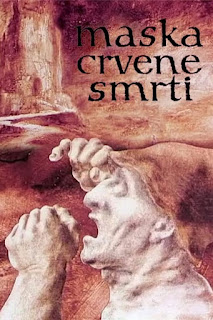... aka: Midnight Song, The
... aka: Song at Midnight, The
Directed by:
"Yao Fung-Pan" (Feng-Pan Yao)
After being away at school for ten years studying what the subtitles call "dree design," Jen-Chiu Tu (Barbara Wang) returns home to visit her wealthy, ailing father (Yu-Hsin Chen) at his sprawling country estate. As luck would have it, she's home just one day before he dies. Though he's been murdered by someone who broke into his bedroom late at night and forced poison down his throat, no one suspects any wrongdoing since he was already ill. That will soon change. I did notice about half an hour into this one, as a bunch of other characters are introduced and the ole overworked "murder for an inheritance" plot is getting set up, that I couldn't stop thinking about that "dree design" degree. When she's having a conversation about it, she's standing by a tree. Did they mean "tree design"... like a landscape designer or architect? Or perhaps "dree" is supposed to be "dress" like a dress / fashion designer? Or perhaps the people who made the subs didn't know themselves? Who knows? It's about as clear as the rich father being referred to as "President" by several characters, though we never learn of what exactly.
There are a number of people / possible suspects living in and around, or making frequent visits to, Jen-Chiu's home. Most of them are shown eavesdropping, snooping and having hushed side conversations to make sure a shadow of doubt is cast upon them. The most obvious red herring of the lot is an unnamed "mad woman" lurking the grounds. Supposedly, Jen-Chiu's father took pity on her and has allowed her to stay there on the edge of their property despite the fact she's threatened to burn down their house! She creeps around spying on people, sings, cackles, attacks people (including trying to chop someone with an axe) and acts like such an over-the-top loon she's clearly not the killer, so moving right along...
A much more likely suspect is Hui Ping Ying (Ming-Lun Ku), a former employee of the father. Since he's young and handsome and was on good terms with Mr. Tu, he makes his move on Jen-Chiu and starts romancing her, which leads to two slow-motion horseback riding scenes set to a cheesy love ballad. He claims he's not interested in taking over the father's business affairs yet that's clearly exactly what he'll be doing if he manages to convince Jen-Chiu to marry him. And, of course, if the two do marry and something happens to her, then... Well you can probably work out the rest.
There's also the father's physician, Dr. Meng (Yuan Meng), who tries to coerce Jen-Chiu to marry Hui Ping and starts the ball on Jen-Chiu's paranoia by letting her know that there may have been foul play in regards to her father's death. A newspaper later reports that the doctor has been killed in an "accident." Also at the home are a stuttering groundskeeper (Yu Wang) who can grunt but can't form words, nods all the time and goes "Uh ah ah ah," his wife (Yin-Shang Liu), who's always seen whispering to people and their miserable daughter Hsiao Lan (Chuan-Chuan Tsou), who isn't too happy about her lot in life and is extremely jealous Jen-Chiu has access to so much wealth while she's the daughter of poor servants. Hsiao Lan is caught stealing Jen-Chiu's clothes and always seems to be walking around the grounds late at night.
A live-in caretaker, Nurse Chang (Juliet Chan), is also set up as a possible suspect at the beginning; the father distrusts her and refuses to take medication from her and she's clearly envious that Hui Ping is after Jen-Chiu instead of her. However, she decides to quit and becomes victim #2. While walking home, someone chases her through the woods and dismembers her with the axe. The crazy lady finds the body, puts it in a bag, drags it to some catacombs on the property and then takes Jen-Chiu to show her her "secret." But when they go back, the body has been moved so they have nothing to tell the police.
After an hour or so of average, sometimes choppily-edited, mostly talky mystery and melodrama, this finally comes through with a pretty great last 30 minutes, kicking off with a gory, blood-spurting cleaver murder. From there, we're treated to all kinds of fun stuff, like the killer doing a little human hunting in the woods, the victims all returning as vengeful ghosts to settle the score, entertainingly overwrought performances from Ku (giving a performance that would give most female "Scream Queens" a run for their money) and the actress who plays the madwoman and a bunch of absurd yet entertaining plot twists, including a finale right out of Scooby Doo! Stick around through the bumpy first half and the rewards are there.
Like most of the director's other genre films, this was not released outside of Hong Kong and Taiwan and has been allowed to slip into almost complete obscurity over the years. No one's bothered releasing this to DVD or Blu-ray and it appears to have only received a single VHS release a long, long time ago. It certainly would have been nice to have a cleaner copy to view, but what you see via my screen caps is the only print of this one currently out there. Seeing how Yao uses the periphery of the frame a lot, his films suffer more than most when presented in full screen.
★★1/2
























































